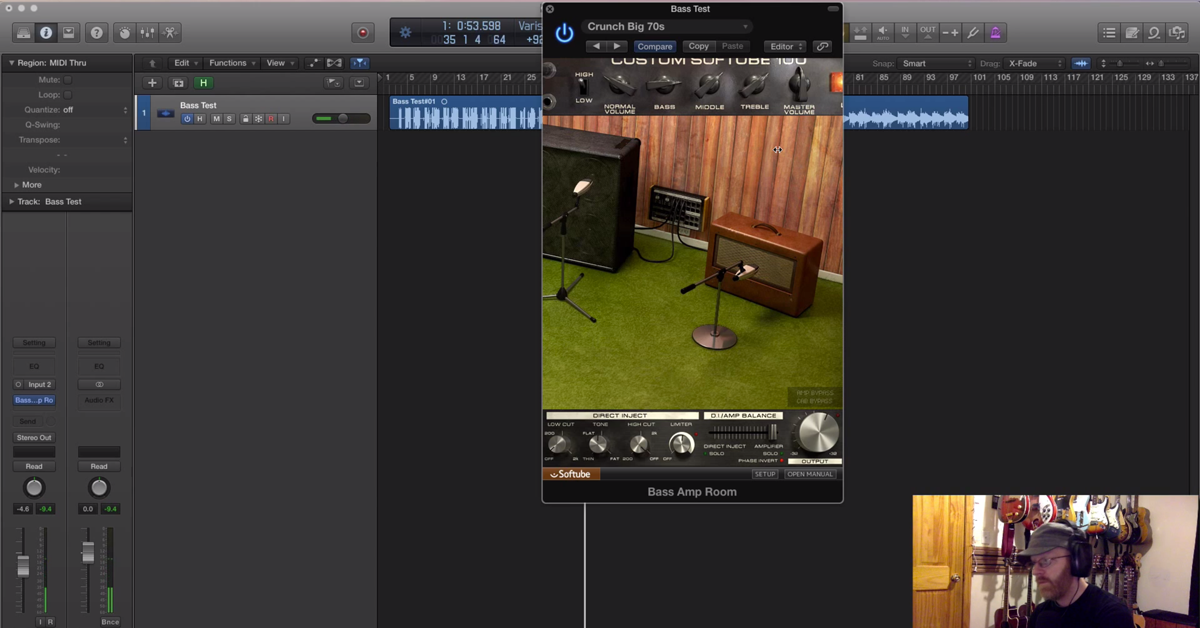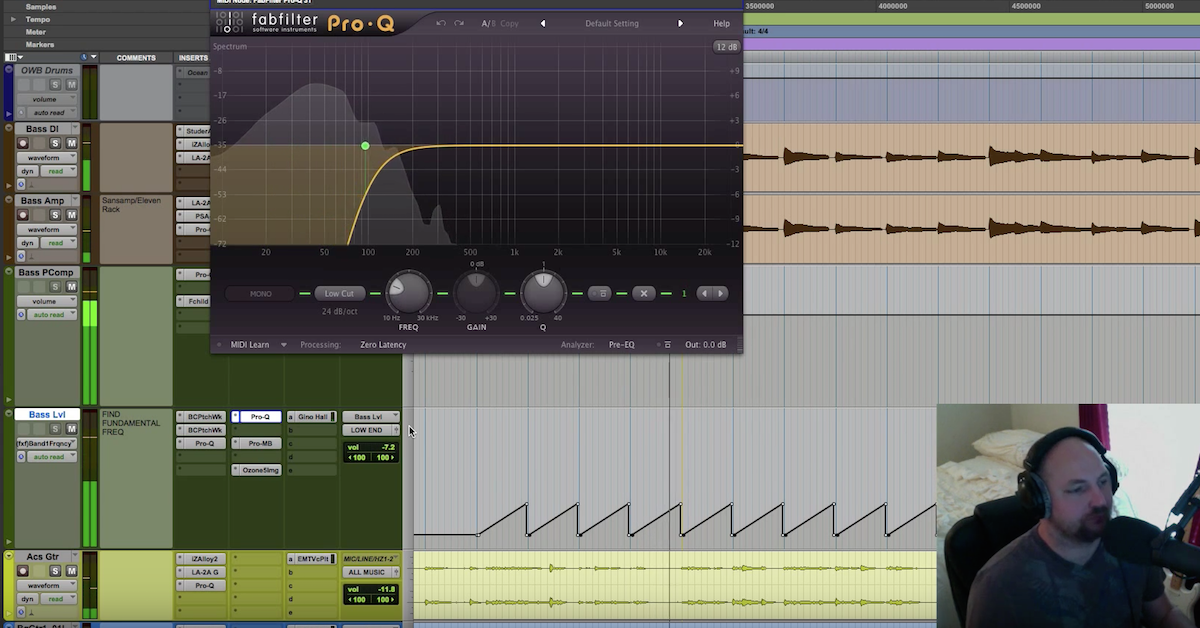Review: Audeze LCD-1 Headphones and Reveal+ Plugin (w/ Interview)
Article Content
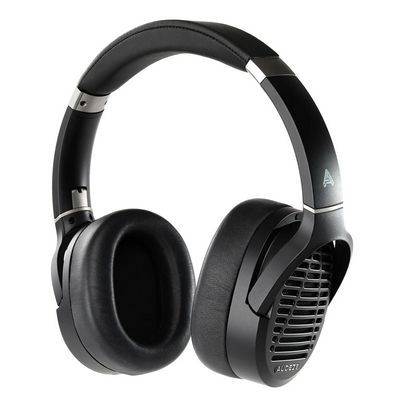
One of the most anticipated new product releases at NAMM this year was the LCD-1 open-back headphones by Audeze (pronounced Au-di-zee). After trying them out at the show, I am happy to report that I am now the happy owner of a pair and they have completely changed my listening and mixing experience for the better.
The obvious difference between open and closed-back headphones is isolation — an important factor if the person wearing the phones is in close proximity to a live mic. But in terms of width and transparency, open-back headphones rule. While the low end might lose some tightness, the sound is more natural and closer to the sound of reference monitors in a well-treated room. They are also far less fatiguing on the ear allowing for longer listening sessions.
There are plenty of other open-back headphones on the market of course, and I wasn’t able to do any direct listening comparisons within a timeframe that would have any real meaning (like an A/B comparison). Beyerdynamic, Sennheiser and AKG among others all make professional-level headphones at the same price point that are sure to satisfy many users. But Audeze’s use of custom parts (manufactured in California), Planar Magnetic driver technology and ultra-thin diaphragms combine to ensure an astounding transient response that feels truly transparent, light and just right.
My interview that follows with the founder of the company, Sankar Thiagasamudram will illuminate more of the details behind the specifics of the technology. Most professional headphones on the market will boast frequency responses well beyond the range of human hearing and you really have to dig deep to find any specs that can be reasonably compared across brands or even models. Finding a retailer where you can A/B headphones can be challenging and even more so than comparing reference monitors. You can look at frequency response, impedance levels, THD, sensitivity, cable type or even aesthetics – but there is no comparison to a listening experience. That said, I can attest the LCD-1’s sound incredible and are as good as it gets at a $399 price point.
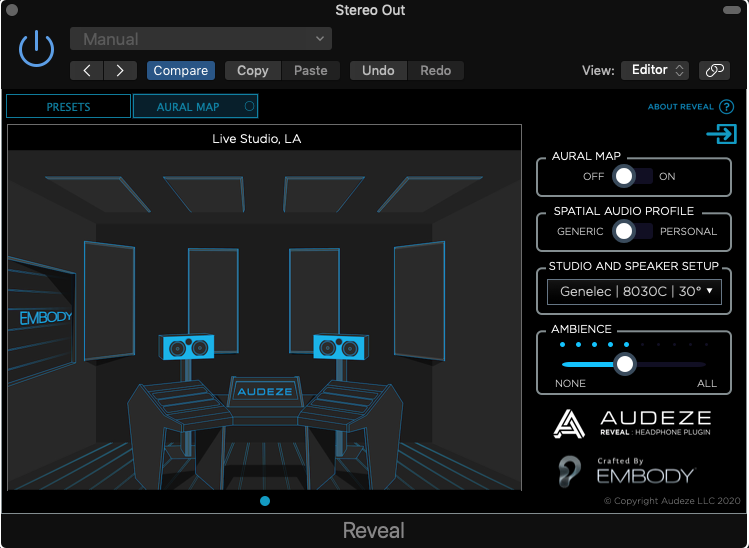
Having taught Acoustics for close to 10 years now, it has been my focus to teach students and aspiring engineers how to make the most of their space via acoustic treatment, monitor choice and positioning of the mixing desk and listening location in a room. It’s an enormous challenge when dealing with imperfect circumstances. Asymmetry is a typical obstacle with closets, windows and irregular room shapes that corrupt the stereo image. Parallel walls and resulting standing waves need to be somehow mitigated with absorption and diffusion.
Taking the coloration of the room out of the equation is key in creating mixes that translate well to other listening environments. There are software solutions out there that can be effective in ameliorating these situations. Sonarworks offers corrective equalization solutions based on taking sonic measurements of your space at the listening position. They also offer EQ correction profiles for a slew of headphone models, including those from Audeze, with the goal of creating a flat response curve across the spectrum.
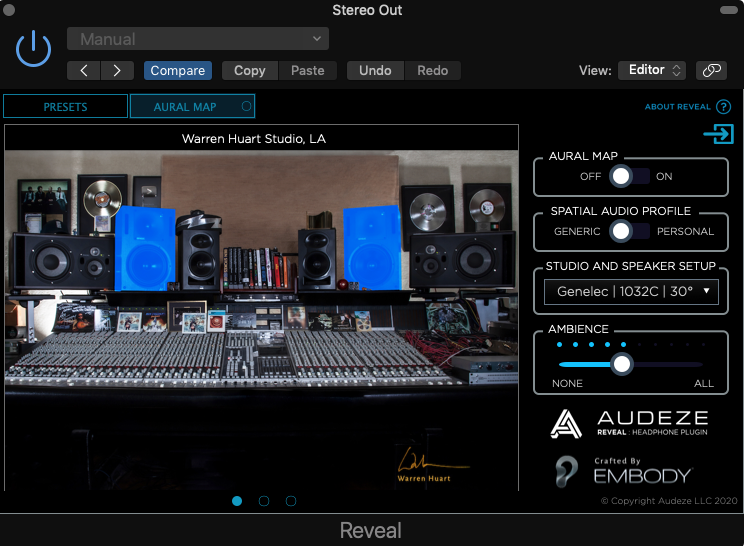
The problem with mixing with headphones as opposed to reference monitors is that headphones completely isolate left and right hearing so that the HTRF (head-related transfer function) is removed from the listening experience. Put simply, when listening via speakers, we hear both left and right channels with both ears. This binaural experience is colored by the shape of our Pinna (outer ear), ear canal, nasal and oral cavities as well as the acoustic shadow of our head. There are inter-aural (between two ears) intensity and time differences that affect our perception of the sound and all these things contribute to the psychoacoustic phenomenon of the phantom stereo image. That is, the sound emanating from a location where no source actually exists. It’s really quite magical when you think about it.
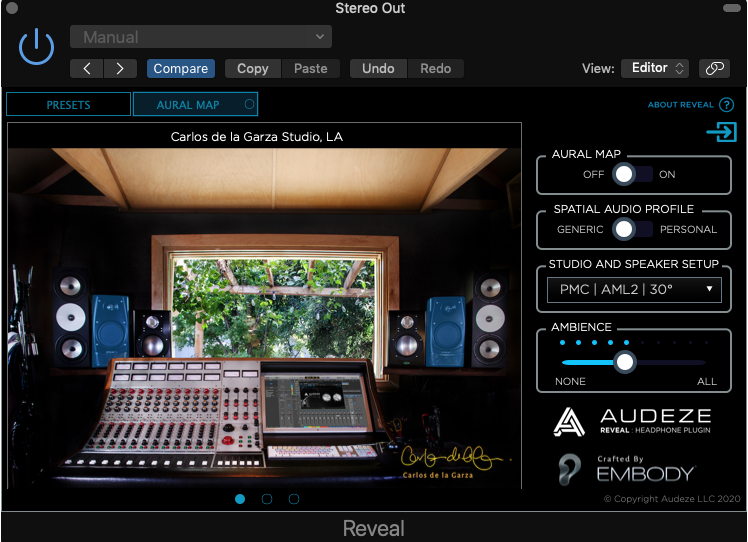
So getting back to the problem at hand for mixing or mastering engineers, how can we be sure that the decisions that are made regarding spectral, dynamic, and panoramic processing are not colored by the listening space or the headphones being used. This issue has been the crux of most discussions revolving around acoustic design and corrective EQ processing.
My fortuitous discovery of Audeze’s LCD-1 headphones at NAMM was surprisingly intensified by my introduction to Reveal+ by Embody. The collaboration between these two companies has resulted in a unique solution that is at the forefront of artificial intelligence and machine learning in audio production. Sankar does a great job in explaining the details in the interview that follows, but in essence, this is how it works: You download an app to your phone, take a picture of your outer ear and upload the photo. The software generates a file based on your physical attributes and that is integrated with a plugin inserted at the end of your signal chain, that alters the sound you hear through the particular Audeze headphones you are using. Going further, you can choose from a growing selection of acoustically modeled studios so that you can hear, in theory, how things would sound in that particular environment. Currently, there are only two studios that have been modeled – that of Carlos de la Garza and Warren Huart. In addition, there are some generic presets based on Genelec reference monitors and specific positioning.
See the video below that describes the process. The goal was to make the process fast (literally seconds) and easy for the user — and I can personally attest that they succeeded.
While there are currently only two modeled studios and a generic space available in the plugin, I’m told that this is just the beginning, and we can expect many more studios as well as specific automobiles and clubs to be included. As an Angeleno, I confess that I spend an inordinate amount of time listening to music in my car, and the idea of music creating or listening to music that is optimized for specific vehicles is very attractive.
Conclusions
The LCD-1’s by Audeze sound incredible and you will not be disappointed. The build is solid and the included hardshell carrying case makes them a perfect portable solution for the traveling engineer. Based on my conversations with the founder of the company I am convinced they are dedicated to producing high quality, handcrafted products that will stand the test of time.
Interview
Philip Mantione: Headphone technology is clearly much more complex than simple impedance and frequency response specs. Can you provide an explanation of how the technology behind Audeze headphones and particularly the new open-back LCD-1’s, differs from your competition? What advantages does this technology offer in practical terms?
Sankar Thiagasamudram: All Audeze headphones including LCD-1 are designed around a number of cutting-edge and patented planar magnetic technologies that distinguish us from our competitors through superior sonic and technical performance. I will provide a brief description of the technologies and their practical advantages here. More details can be found on our website and I will link to them too.
Some Audeze headphones are closed-back, others open-back. Isolation from the listening environment is the major difference between open and closed, with closed-back models featuring a bit more power in the bass and a slightly rising top-end. Even within our open-back and closed-back models, the size of the earpads and driver are different. Generally, larger earpads and drivers help create a larger soundstage and also improve bass impact.
There are significant advantages to Audeze’s planar magnetic design and associated technologies. Most headphones use inexpensive, mass-produced dynamic cone drivers in standard sizes sourced from just a few OEM/ODM producers. But these drivers have serious inherent design limitations resulting in distortion, severe break-up modes, compromised bass response and slow transient response that affects resolution and speed. We have a more detailed write-up on Planar Magnetics and its advantages here.
Planar magnetic headphones suspend a flat, extremely thin and lightweight diaphragm in a powerful magnetic field from an array of magnets. The diaphragm has electrically conductive traces (the voice-coil of planars) that run parallel to our in-house, custom-cut and treated bar magnets. According to Fleming’s Left-Hand Rule, when current passes through the voice-coil traces it induces a second magnetic field that interacts with the field produced by the magnets and so the diaphragm moves and creates sound. Unlike cone drivers, planar drivers when designed properly, exhibit textbook pistonic movement. What this means for customers is a clean distortion-free sound, better bass extension because of the large driver and better resolution because of the ultra-light diaphragm.
Another advantage that is less obvious is that Planar Magnetic drivers are purely resistive in nature. We are able to design custom drivers with different impedances as the use-case requires. Being purely resistive, their impedance remains constant throughout the frequency range; they are a much easier load on amplifiers and source matching becomes less of an issue as long as the amplifier has enough power to drive them.
We at Audeze pride ourselves as the company that made Planar Magnetic technology a household name among audiophiles and the pro audio community alike. We have been continuously innovating and advancing the technology through breakthroughs in material science, magnetic design, acoustic design, and signal processing.
Audeze’s original diaphragm material was developed for NASA; they needed strong, lightweight films that could be carried into space and survive the harsh environment. Civilian technology transfer allowed us to secure the material’s technology and further refine it with a range of new techniques to handle the new film. An ultra-thin metal layer is vacuum-deposited on the film to increase flexibility. The film is micro-etched to create the voice-coil traces.
Transparent sound reproduction requires the drivers to be nimble, just like a sports car navigating a complex set of hairpin bends at break-neck speed (more here). The headphone driver needs to accelerate quickly and also decelerate so it can perfectly follow the input sound signal faithfully. If the headphone driver can do this, it simply disappears, i.e. it is transparent and the listener hears the sound as it was intended. However, laws of physics dictate that for a given force, the amount of acceleration is determined by the mass of an object. So lighter the diaphragm, the faster it can accelerate and the more transparent it sounds. Audeze’s ultra-thin diaphragms are orders of magnitude thinner and lighter than the lightest cone drivers and also one of the thinnest and lightest planar drivers in the market, giving Audeze headphones an edge in transparency and resolution.
With nano-scale diaphragm we use in our LCD-4 series of headphones, we push the envelope further. The nano-scale diaphragms are less than a micron thick, they are lighter than air and take two weeks to manufacture. The nano-scale diaphragms provide the ultimate experience in transparency and resolution. There is more information about our diaphragm technology here.
Many of our headphones, including the LCD-1, use our patented super-efficient Fluxor™ magnets. N50 Neodymium Fluxor Magnetic Arrays deliver nearly double the magnetic flux density of any other highest-grade neodymium headphone designs. What this means for our customers is that for the same weight of the planar magnetic drivers used in other planar magnetic designs, Audeze headphones are about 6dB more efficient! For more technical information, we have an article about Fluxor magnets here.
By virtue of the higher flux density delivered by Fluxor magnets, our magnetic design exerts a stronger force on the diaphragm which is required to have good control over the diaphragm. Good control over the diaphragm translates to very linear and smooth frequency response.
One of the claims to fame of planar magnetic technology is their ability to produce a pistonic motion where the whole diaphragm moves in unison. This pistonic motion is required to avoid break-up modes (where parts of the diaphragm are moving at a different rate, leading to distortion and a frequency response that is not smooth). However, true pistonic motion of planar diaphragm is easier done on paper than in real life. To our knowledge, Audeze’s driver technology comes closest to delivering on the promise of pistonic motion in a planar diaphragm.
We use patented Uniforce voice-coils to achieve pistonic motion. Uniforce voice-coils uses variable trace widths that effectively deals with variations in the magnetic field produced in the gaps between the magnets by equalizing the forces of the individual traces. This innovative technique creates a uniform driving force across the entire diaphragm’s surface which is required for a pistonic motion; resulting in dramatically reduced distortion, higher resolution and improved imaging. We have more information on our diaphragm technology here.
Planar magnetic drivers use magnets that are in the direct path of sound. The magnets can cause diffraction as sound passes through and gets reflected. To mitigate the effect of diffraction, Audeze employs patented Fazor technology. Fazors are carefully designed waveguides that allow sound waves to pass through without much diffraction. This results in improved clarity and imaging precision. First introduced in the LCD Collection, Fazors is standard equipment in all Audeze headphones including the LCD-1. More information about our Fazor technology can be found here.
In summary, Audeze headphones use an array of technologies that sets us apart from the competition and helps us deliver the full potential of what planar magnetic technology is capable of. Which is a superior sound with negligible distortion.
PM: How did the collaboration with Embody and the Reveal app come about? Can you explain the general premise and in what situations a producer or engineer might find it useful?
ST: At Audeze, we design the best possible headphones for the given form factor. However, we have to work within the limitations of what the laws of physics will allow. We embrace DSP as a way to break free from these physical limitations. We have been researching the use of signal processing techniques to supplement headphone listening for several years now. Through our Cipher DSP we have improved bass response, added the effect of the outer ear to our in-ear headphones, and made closed-back headphones such as LCD-XC sound like open-back headphones. The next leap we wanted to make was to make our headphones sound like a pair of reference monitors. We took the first steps in doing that through our collaboration with Waves and brought Mobius to the market that was the first headphone to incorporate head tracking and HRTF to provide a virtual 3D soundscape. Mobius is currently being used by many studios to check surround mixes. Encouraged by the response we received for Mobius, we wanted to bring stereo and surround soundscape to all our headphones.
There are multiple benefits for stereo and multi-channel emulation using our new Reveal App. It allows producers and engineers to work on their mixes even when away from their studios. It allows producers and engineers to evaluate their mixes virtually in more than one set up in studios that they may not have easy access to.
We plan to introduce more environments in addition to studios, such as clubs, cars etc. Since music is consumed less often in ideal studio setups, and more often in other environments, engineers can quickly evaluate how their mixes translate to other environments. We reduce the barrier of entry by allowing budding artists and engineers to create their mixes from the comfort of their offices or bedrooms without having to invest in reference monitors and room treatment.
One of the main challenges in making a pair of headphones sound like speakers or reference monitors is that headphones do not fully capture Head-Related Transfer Function (HRTF). HRTF is unique to each person and it represents how sound is modified by or head, torso, pinna, concha and ear canal before it hits our eardrum. Headphones are too close to our ear, they are on-axis and they lack the crosstalk that is typically associated with speakers. It is physically not possible to make a pair of headphones sound like a pair of speakers.
We have been researching ways to make a headphone sound like a pair of speakers. One of the best ways to do this is by measuring one’s HRTF using a mic placed inside the ear and measuring a pair of speakers or a multi-channel setup one wishes to emulate. When music is played back via the measured HRTF through a pair of high-quality headphones, the results can be very convincing and sometimes even hard to distinguish from the original speakers. Making such measurements requires a dedicated measurement rig and technical skills. While certainly doable, it would either be cost-prohibitive or too complex for many to use. We were actively looking for technologies that will make HRTF capture much more simple and user-friendly. We knew with the recent advances in Machine Learning and AI technologies, it was only a matter of time before one could derive an HRTF from pictures. When Embody VR showed us their technology we were quite excited and their roadmap aligned with our vision and Reveal+ with Aural Map was a result of the collaboration.
PM: Currently, there seem to be just two actual studios and a generic studio accessible in the Reveal plugin, while the full product line of Audeze headphones can be selected. Are there plans to add more virtual studio set-ups in the future?
ST: Yes, the idea is to expand studios. We will also be adding other environments (cars, clubs etc) and expanding to multi-channel setups.
PM: The Audeze app apparently uses a single pic of the user’s pinna (outer ear) shot from the side to adjust the frequency response. But this approach doesn’t seem to account for the front or rear (or top or bottom) profile of the pinna which could vary substantially from person to person. Is this not a factor? Are there any plans to implement a more three-dimensional approach?
ST: That is a great question. There are different approaches to creating an HRTF from pictures of ears. Embody VR wanted to make the procedure as simple as possible and it does not get any simpler than a single picture of the ear. The rest is done by the magic that is machine learning. Embody VR has already trained a deep-computing AI with numerous pictures of ears and 3D HRTF capture that measures HRTF of real people within a sphere. When presented with a picture of the ear, it is able to predict the HRTF and provide a SOFA model. Our measurements indicate there is a close correlation between true HRTF and the HRTF generated by Embody’s AI.
The framework behind Reveal+ emulation is quite flexible and allows room for improvement in the future. As embody VR grows its library and the AI becomes even smarter, the quality of HRTFs will continue to improve. It also leaves open the possibility of using multiple pictures, combining AI-generated HRTF with personal measured HRTFs. We are quite excited about the future of this technology.
PM: I’m a bit confused by the Ambience slider control in the plugin. If the point is to emulate an actual studio sound, shouldn’t this be fixed?
ST: Ambience slider controls the amount of reverberant energy. This allows users to customize the studio sound more than they can actually do in a studio. One of the advantages headphones offer over speakers is the lack of room reflections. This is both an advantage and a disadvantage. Reverberant energy is required for our brain to perceive depth but reflections affect clarity and transparency. The ambiance slider lets the user strike the right balance between monitors and headphones.
PM: Do you think it is possible (or advisable) to successfully mix and/or master music without reference monitors using this technology?
ST: It is certainly possible to get very close with headphones using this technology. There are sound engineers who already mix using our headphones. Aural Map technology makes that transition even easier. Our goal is to get the user as close to the studio experience as possible, especially when studio access is limited.
PM: The LCD Reference series includes the LCD-1 ($399), LCD-X ($1199), LCD-XC ($1799) and the LCD-MX4 ($2995). That is quite a range! Can you briefly explain the added utility that the LCD-MX4 provides over the newly released LCD-1, which are both open-back designs?
ST: The biggest difference between LCD-1 and LCD-MX4 is that LCD-MX4 is a full-sized open-back headphone. Because it is larger with larger drivers and bigger earpads, the soundstage is larger in LCD-MX4 and the imaging is also better. LCD-1 uses a single-sided fluxor magnetic array while LCD-MX4 has double-sided Fluxor magnetic array. The double-sided array results in a true push-pull diaphragm and much stronger flux density (1.5 Teslas!). As a result, LCD-MX4 has much better control over the diaphragm. This translates to higher resolution and improved transient response. The larger drivers in LCD-MX4 also results in better and more extended bass response and bass impact.
Check out my other articles, reviews and interviews
Follow me on Twitter / Instagram / YouTube



